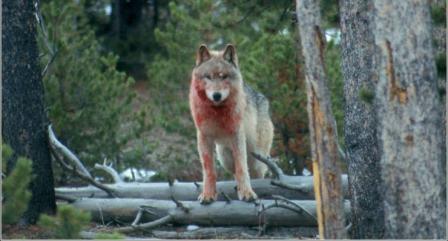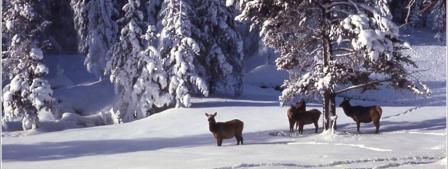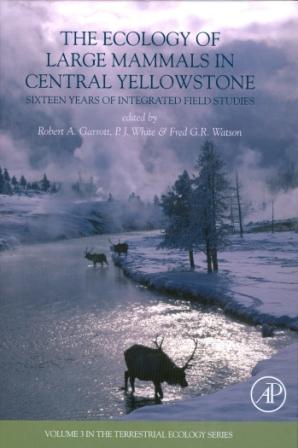Integrated Ecological Science in Central Yellowstone
Research
Yellowstone National Park represents a national treasure with an extremely large and diverse constituency that continues to grow each year as millions of Americans and people from throughout the world visit the Park and experience its unique geothermal features, wildlife populations, natural vistas, and cultural resources. Natural resource professionals responsible for managing the Park are charged with the dual mandate of providing for public enjoyment while ensuring that resources remain unimpaired for the enjoyment of future generations. The success of managers in meeting this challenge is unequivocal as the Park accommodates approximately three million visitors annually while still managing nearly 90% of the landscape as defacto wilderness. Equally impressive is the fact that natural processes are allowed to continue exerting their forces on the landscape and organisms that inhabit the Park, with a full and thriving complement of species assemblages that existed prior to European settlement. Despite this record, management of the Park and its natural resources are continually embroiled in controversy including recent and current debates on wild fire management, appropriate population levels of bison and elk, wildlife disease management, management of threatened and endangered species, wolf reintroduction and its impacts on prey species, exotic species control, and impacts of winter recreation on wildlife populations and the environment. The constant and high profile dialogue among professional resource managers, policy administrators, politicians, and the public is a strong sign of the success of Park management. These debates would not exist if the rich natural resource heritage of the region had not been preserved and restored while simultaneously being accessible to all Americans to experience and enjoy, hence, generating strong feelings of personal ownership, pride, and interest in Park management by a very large segment of the public.
Over the past century the role of science in the Park as an important component contributing to policy and management debates has steadily grown. Ecological science in the Park, however, is often reactive with periodic infusions of resources allocated to specific short-term studies each time a major natural resource controversy gains high public profile. While such a response is better than attempting to make important policy decisions in the absence of adequate scientific information, it is neither efficient, cost effective, nor timely. Understanding of large ecological systems comes slowly, requires integrated teams of scientists, and is a costly endeavor that would best be shared by developing partnerships with a variety of funding sources. The current practice of conducting science in support of management is for the National Park Service to fund the majority of costs of the research endeavor and formulate research plans relatively quickly with existing staff; many of which may lack substantial technical experience with all of the issues. Despite this less than ideal approach such endeavors have generally produced sound scientific information, although often the important policy and management decisions must be made before the scientific products are available.
The Vision

Better scientific understanding of the Yellowstone ecosystem as an integration of many processesOur vision is to develop our existing work in close collaboration with the Park, toward the following unifying outcomes of integrated science:
- Better-informed management integration tools for guiding decision making
- Better public communication tools for interpretation the Yellowstone ecosystem
Over the past 19 years we have developed an alternative paradigm for Park science, focusing on the central Yellowstone region with the core of data collection thus far concentrated in the upper Madison drainages. In essence, we have slowly built a long-term research program that is making excellent progress in understanding ecological and human linkages and processes that affect the landscape and the complex of resident large mammals that are usually the focus of wildlife management controversies. We share a common vision of building an integrated and multidisciplinary research program dedicated to producing objective science with the goal of advancing our knowledge of the Yellowstone ecosystem, supporting sound natural resource management, and communicating our knowledge and discoveries to the visiting public to enhance their experience and enjoyment of the Park. We have developed a small and tight-knit team of ecologists with complimentary skills and expertise representing diverse disciplines including mammalian ecology, population dynamics, spatial ecology, predator-prey dynamics, mathematics, statistics, hydrology, remote sensing, geographic information systems, computer science, and modeling. Additional expertise is gained through collaborations with colleagues throughout the nation, which to date include 66 scientists and professionals. Much of our work has been synthesized in an edited book entitled ‘The Ecology of Large Mammals in Central Yellowstone: Sixteen Years of Integrated Field Studies’.


